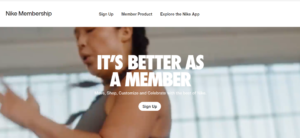Understanding who you’re creating for enables you to uncover real user needs and better your product. Here’s how you can start.
Every word about a brand influences its reputation. Hence, brands must do everything possible to ensure that they and their customers say the best things.
Brands can control their information channels, chosen words, and copies. But, managing the reviews and testimonials of customers isn’t easy. Here is where the concept of customer experience comes in.
The internet has brought everything closer. Traditional media limited the ability of customers to provide feedback. Thanks to the internet, ‘person A’ can quickly know the complaints of ‘person B’ about a brand.
Over time, it’ll start to affect brand reputation. Subconsciously, an array of negative comments can cause ‘person A’ to ditch the brand in question.
Up to 85% of consumers trust online comments as much as personal recommendations. Therefore, if your brand has a poor brand reputation, it’s likely to lose customers.
On the surface, it may seem that marketing can solve this problem and lead to the onboarding of new customers. That’s simply focusing on the wrong thing.
Now, business is no longer about having the best product nor creating the best marketing campaign. Instead, business is about creating and selling the right customer experience.
When you’re able to satisfy customer needs in the way they want, your brand will see an improvement in its reputation. As a small business owner or a growth marketing specialist, it’s essential to learn how to tweak customer experience to boost overall brand appeal.
How to Improve Brand Reputation via Customer Experience: Effective Strategies
The greatest marketing strategy for a business is getting current customers to spread the word. However, existing users won’t say anything about your brand if their experience is subpar.
Search Engine Optimization (SEO)
The internet is vast, and it’s difficult for search engines to rank all content. Hence, Google and the likes developed ranking algorithms that put forward content of perceived importance to user queries.
Search engine optimization is the process of improving a site to make it visible to more people. The better the SEO, the higher Google ranks the content. Ranking on the first page of SERP (Search engine results page) infers that the content offers a great experience.
By optimizing your website, you can improve the experience of users. The experience, in this case, involves the provision of value. Google says content is valuable when it adequately answers a user’s queries. Getting adequate answers to their questions forms a good experience for users.
When users experience value with your content, they’ll share it. Content that enjoys numerous shares enjoys an improved reputation with Google. Also, other people trust the content more, as someone they know already found it valuable.
Content plays a critical role in customer journey maps. Content helps build interest in your product or service. How good customers feel about your content also gives a sentimental value which they’ll associate with your product. Artificial intelligence technology opens unique opportunities for brands in sentimental analysis and content creation.
If you don’t know how to optimize content from your company, hire a specialist. Search engine optimization takes time, but it’s worth it in the long run.
Talk to Customers
A reputable brand makes the customers feel included. One way to achieve inclusivity for customers is by discussing with them. As basic as the ‘talking’ strategy sounds, it can mark the beginning of highly effective customer journey maps.
Talking helps you, as the growth marketer or entrepreneur, identify the needs of the customer. You can then go to the drawing board to figure out a journey map that creates the best experience for a customer with that specific persona. You’ll create a better experience for customers if you know what they want and how they want it.
At the same time, insight from your discussions can be a pointer to a need the customer isn’t aware of yet. Nothing feels better for a customer than getting solutions to needs they didn’t even know they had.
Act on Feedback
Acting on feedback from your customer can breed a cult-like loyalty to your brand. The average customer doesn’t expect your brand to be perfect from the outset. However, when they see corrections due to their feedback, they’ll feel you heard them.
The feeling of being heard makes customers rate a brand more highly — an upward shift in reputation. Conversely, brands that fail to act on past customer feedback — without providing a reasonable explanation — suffer from a negative sentiment from customers.
Acting on feedback is part of the customer experience your brand should offer. As a growing business, your identity should be that of one ready to learn and improve.
Make the Product Better
Whether you are offering a product or service, deliberately making things easier for customers adds to their experience. In the tech-enabled ecosystem we live in currently, customers want to execute processes faster. So, if you optimize your offerings to save customers’ time, they’ll appreciate it.
If a process typically takes three steps, customers will appreciate an optimized version with two steps. Even after offering a great product, don’t stop making it better. For customers, the brands with the best reputations are the ones that make aspects of their lives better. Therefore, you should aim to be that brand. Give customers an experience like no other.
Invest Heavily in Customer Support
In a survey by Hubspot, 68% of participants claim to be willing to pay more for products or services with exceptional customer service experience. This statistic tells the tale of how much customers rate brands that value them.
A significant way to value your customers is to ensure help is always there when they need it. If your business operates online, several issues can arise per time. Having an expert on hand, at all times, to help customers through these frustrating moments is vital. You can use chatbot and AI technology to improve accessibility to your customer support.
After getting support, the little sentiment of goodness from the customer can move the needle on the brand reputation scale.
If giving customers instant support isn’t possible, work towards ensuring that help gets to them within the hour. Further delays can go beyond harming your customers’ experience; you can lose a customer.
Final Thoughts
There are several businesses just like yours, with unique features and offerings. A top reputation can help you stand out. And, you can build one by harnessing different areas of customer experience.
The companies that offer the best experience to customers enjoy the largest market share. If you don’t want your business to go under, invest time and resources crafting the best customer journey map.




